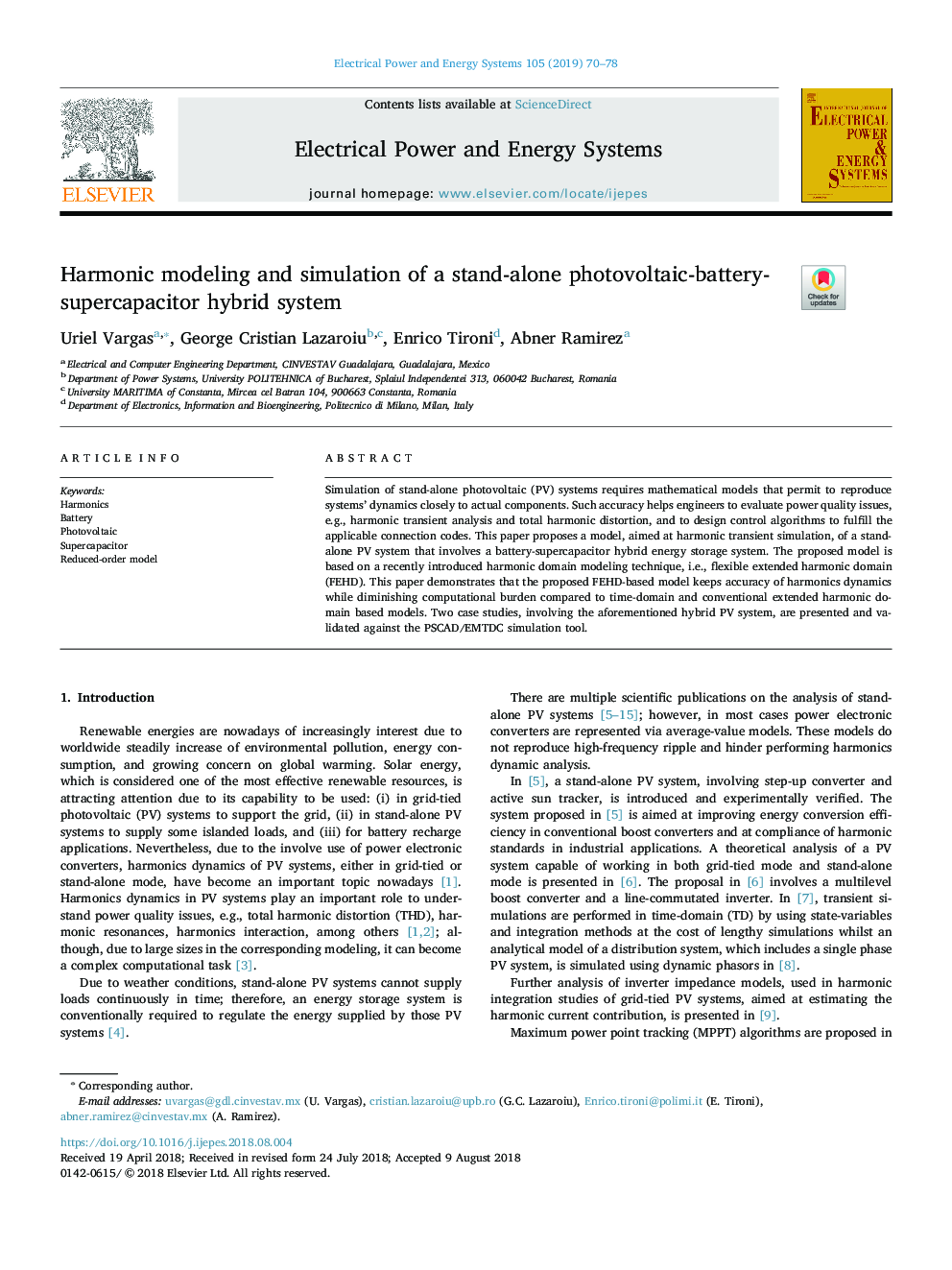| Article ID | Journal | Published Year | Pages | File Type |
|---|---|---|---|---|
| 9952096 | International Journal of Electrical Power & Energy Systems | 2019 | 9 Pages |
Abstract
Simulation of stand-alone photovoltaic (PV) systems requires mathematical models that permit to reproduce systems' dynamics closely to actual components. Such accuracy helps engineers to evaluate power quality issues, e.g., harmonic transient analysis and total harmonic distortion, and to design control algorithms to fulfill the applicable connection codes. This paper proposes a model, aimed at harmonic transient simulation, of a stand-alone PV system that involves a battery-supercapacitor hybrid energy storage system. The proposed model is based on a recently introduced harmonic domain modeling technique, i.e., flexible extended harmonic domain (FEHD). This paper demonstrates that the proposed FEHD-based model keeps accuracy of harmonics dynamics while diminishing computational burden compared to time-domain and conventional extended harmonic domain based models. Two case studies, involving the aforementioned hybrid PV system, are presented and validated against the PSCAD/EMTDC simulation tool.
Related Topics
Physical Sciences and Engineering
Computer Science
Artificial Intelligence
Authors
Uriel Vargas, George Cristian Lazaroiu, Enrico Tironi, Abner Ramirez,
